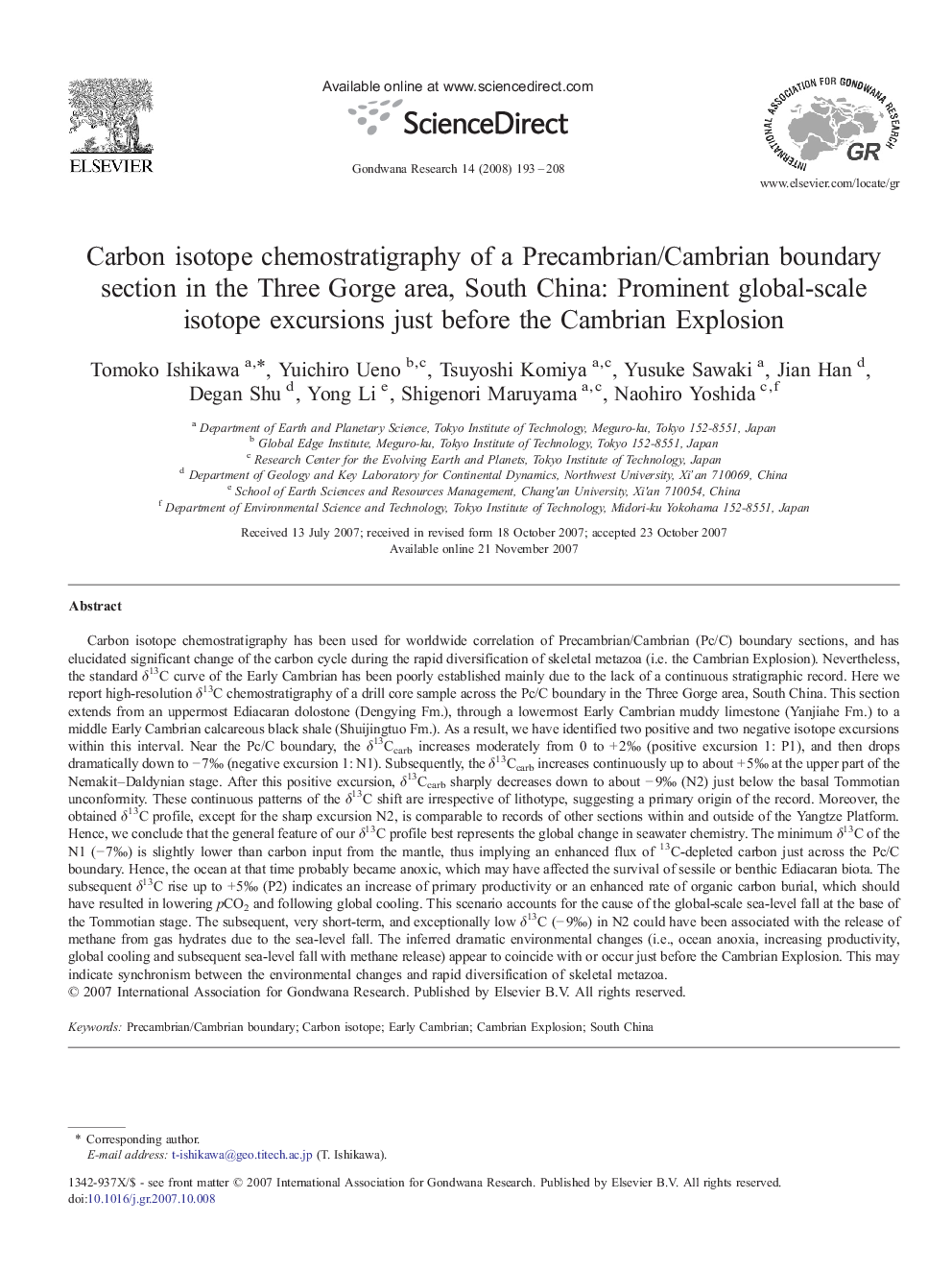| کد مقاله | کد نشریه | سال انتشار | مقاله انگلیسی | نسخه تمام متن |
|---|---|---|---|---|
| 4727954 | 1640152 | 2008 | 16 صفحه PDF | دانلود رایگان |

Carbon isotope chemostratigraphy has been used for worldwide correlation of Precambrian/Cambrian (Pc/C) boundary sections, and has elucidated significant change of the carbon cycle during the rapid diversification of skeletal metazoa (i.e. the Cambrian Explosion). Nevertheless, the standard δ13C curve of the Early Cambrian has been poorly established mainly due to the lack of a continuous stratigraphic record. Here we report high-resolution δ13C chemostratigraphy of a drill core sample across the Pc/C boundary in the Three Gorge area, South China. This section extends from an uppermost Ediacaran dolostone (Dengying Fm.), through a lowermost Early Cambrian muddy limestone (Yanjiahe Fm.) to a middle Early Cambrian calcareous black shale (Shuijingtuo Fm.). As a result, we have identified two positive and two negative isotope excursions within this interval. Near the Pc/C boundary, the δ13Ccarb increases moderately from 0 to + 2‰ (positive excursion 1: P1), and then drops dramatically down to − 7‰ (negative excursion 1: N1). Subsequently, the δ13Ccarb increases continuously up to about + 5‰ at the upper part of the Nemakit–Daldynian stage. After this positive excursion, δ13Ccarb sharply decreases down to about − 9‰ (N2) just below the basal Tommotian unconformity. These continuous patterns of the δ13C shift are irrespective of lithotype, suggesting a primary origin of the record. Moreover, the obtained δ13C profile, except for the sharp excursion N2, is comparable to records of other sections within and outside of the Yangtze Platform. Hence, we conclude that the general feature of our δ13C profile best represents the global change in seawater chemistry. The minimum δ13C of the N1 (− 7‰) is slightly lower than carbon input from the mantle, thus implying an enhanced flux of 13C-depleted carbon just across the Pc/C boundary. Hence, the ocean at that time probably became anoxic, which may have affected the survival of sessile or benthic Ediacaran biota. The subsequent δ13C rise up to + 5‰ (P2) indicates an increase of primary productivity or an enhanced rate of organic carbon burial, which should have resulted in lowering pCO2 and following global cooling. This scenario accounts for the cause of the global-scale sea-level fall at the base of the Tommotian stage. The subsequent, very short-term, and exceptionally low δ13C (− 9‰) in N2 could have been associated with the release of methane from gas hydrates due to the sea-level fall. The inferred dramatic environmental changes (i.e., ocean anoxia, increasing productivity, global cooling and subsequent sea-level fall with methane release) appear to coincide with or occur just before the Cambrian Explosion. This may indicate synchronism between the environmental changes and rapid diversification of skeletal metazoa.
Journal: Gondwana Research - Volume 14, Issues 1–2, August 2008, Pages 193–208